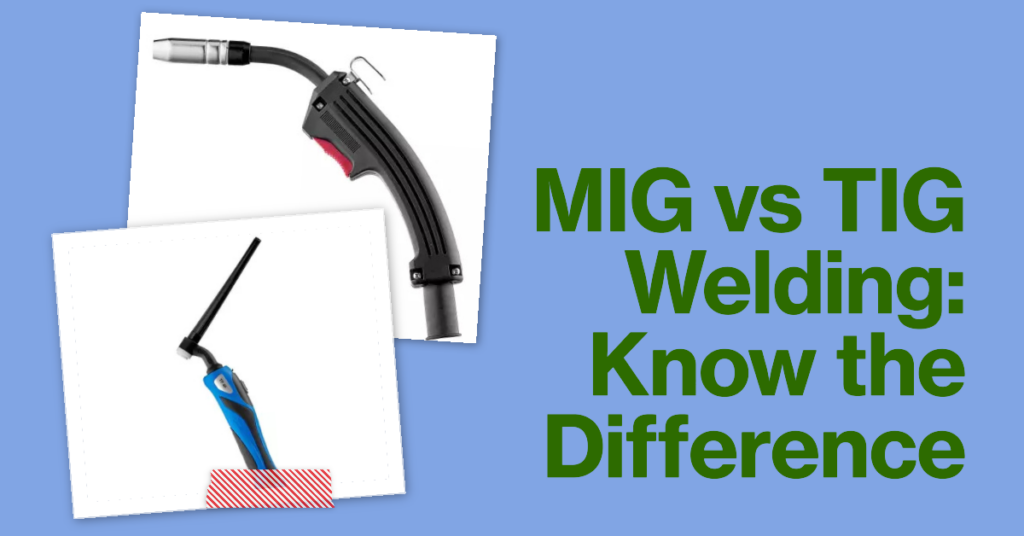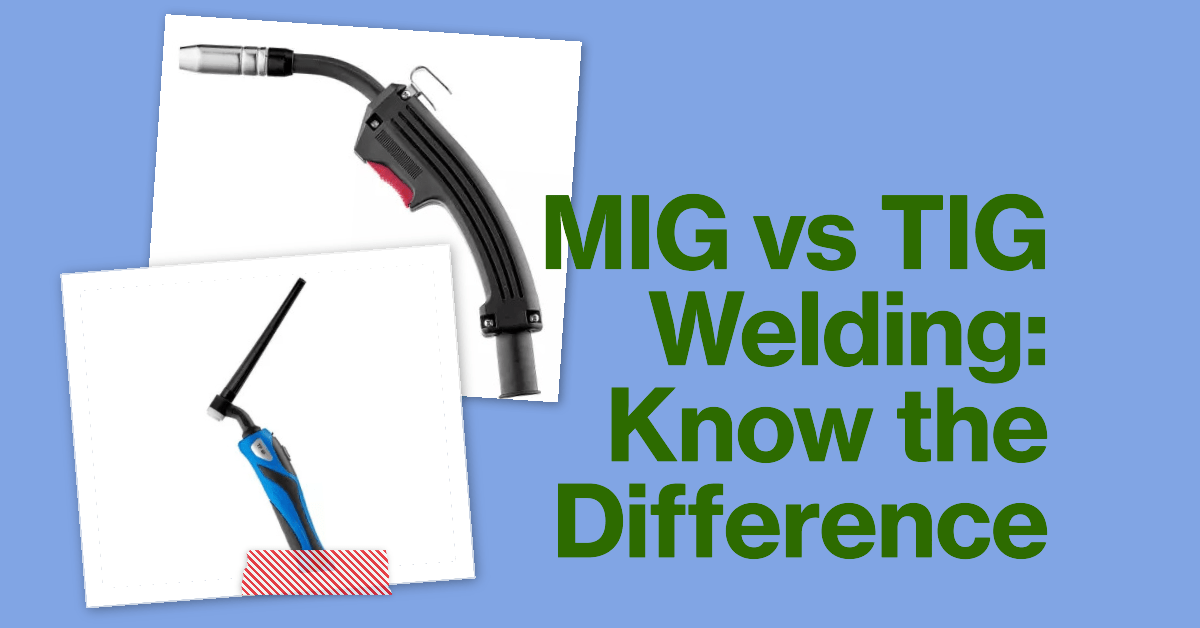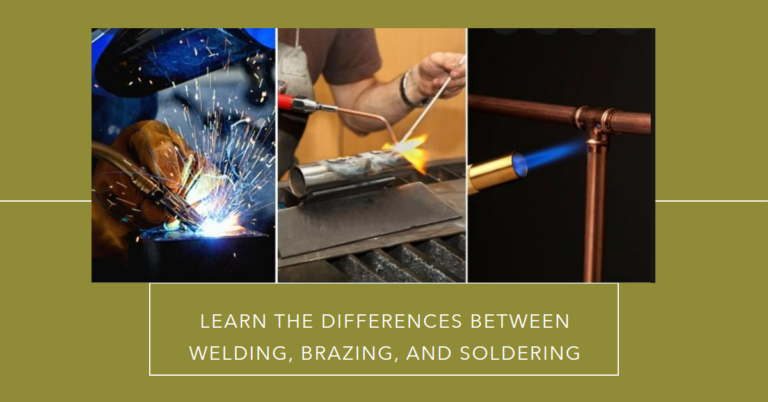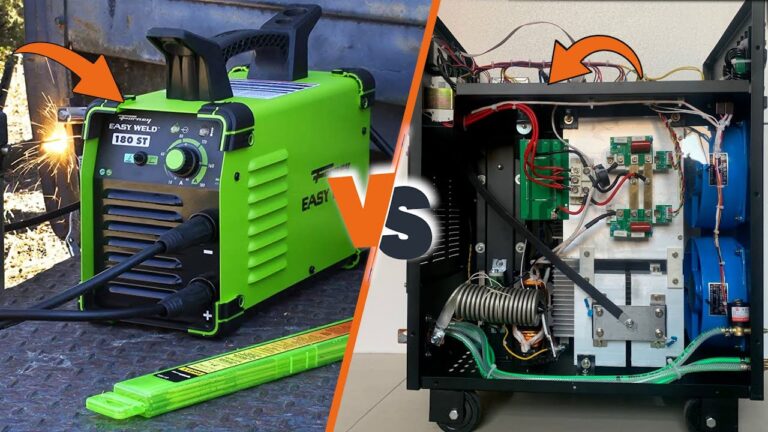Want to know the difference between MIG Vs TIG welding? The TIG welders always prefer their welding method, while the MIG welder prefers their one. But both these methods give you fine, excellent, and durable welding results.
In this article here, we bring the top 8 differences between TIG and MIG welding. By reading these differences, you will select a more specific welding method for your work. You can not weld every metal with only one welding method. Instead, you can achieve a perfect weld result using the right welding method.
Difference Between MIG and TIG Welding Process

Take a look at the 8 top differences between MIG vs TIG welding.
1. Arc size
TIG arcs are narrow ones, and they are caused by deep penetration while more heat is used during TIG welding. However, it is a little direct heat zone, but the consumption of heat is excessive.
The narrow arcs are hotter, just like the narrow flame. The amperage is the same as the MIG welding, but their efficiency is much more than MIG welds. Due to their wide spans in MIG welding, they lose their concentration, but more heat is produced in TIG welding because of their small spans.
The TIG arc is created between tungsten rods. However, the rod remains static in the torch. The MIG arcs are created by an electric current that passes through the wire feed. This feed remains out of a torch-like gun.
There is less penetration in the MIG arc than that of TIG welding, while these arcs are larger ones and require high heat input. On the other side, the TIG is narrow and more accurate than the MIG arc.
2. Feeding of filler wire
The MIG filler wire feed is the most speedy and straightforward process of welding. In MIG welding, you have to feed the wire into the machine from a big spool of wire.
The wire is passed through the roller with the help of lead. When the rolling is done, it is taken out from the endpoint of the gun nozzle. In TIG welding, the filler wire is fed into a weld pool.
The feeding is done by hand, making this process complex, challenging, and slow compared to MIG welding.
The other names of MIG welding are point and shoot welding. Because in this wedding technique, you need to point your gun in the right section and pull the trigger to complete the whole welding process.
When the arc formation is started now, you only have to move your gun across the joint with a suitable speed range to complete the weld. On the other side, the TIG welding needs more skill, full hand, and concentration for proper wire feeding so that you can complete the weld by traveling in an even position.
3. Welding Speed
MIG welding is fast, and you can easily achieve long-lasting perfect welds. Its setup also takes less time than TIG welding.
You can increase its travel speed along joints much faster as compared to TIG welding. But the only thing you need to care about is penetration; if you decrease penetration with over speed, you will not get the desired result in the end.
On the other side, TIG welding is a much slower process than MIG welding. Although its weld quality is much higher, you can only make prime quality weld with slow-speed travel.
In this welding, the only problem is the wire feeding which makes it slower. You can not feed the wire quickly in the weld pool, even if you are feeding by hand.
4. Weld quality and penetration
When the MIG welds are formed, they are strong and robust, but still, they are not perfect and long-lasting. The reason is that after some time, holes are formed in these welds. These holes make them weaker and avoid their usage in sealing tanks and pressure vessels.
On the other side, the TIG welds are more robust and have high quality than the MIG welds. They are commonly used as sealing welds because of their fine and high quality.
There is a high penetration needed in TIG welds as compared to MIG welds, and this penetration makes them more strong in MIG welding. There is naturally no need for deep penetration, while the small MIG tacks can break quickly and easily.
Using a TIG welder, you can make small, robust tacks without any feeding of filler wire. You have to put much effort and struggle if you want to break these tiny TIG tacks.
5. Stainless steel and welding metal types
In TIG and MIG welding, you can weld every metal; however, every metal welding needs its specification and preparation work. Both TIG and MIG welders can perfectly weld aluminum, but stainless steel is only welded by TIG welding.
Although there are still some MIG welders doing the MIG stainless steel welding, mainly stainless steel welding is done by TIG welding.
The reason behind only TIG welding of stainless steel is due to its uncoated fabrication. It is an expensive material and requires a spotless weld. Only TIG welding can make stainless steel tanks with perfect sealing.
Steel is one of the dirtiest metals because of its smooth and shiny surface. In TIG welding, cleaning the steel surface is the most important thing for making a perfect quality weld. There is much time needed in TIG welding steel cleaning as compared to MIG welding.
6. Welder dress
The MIG welders work with high speed and complete their projects in less time than the TIG welders. But their look is not decent and attractive as a TIG welder. In TIG welding, the welder does not require any finishing work, and they also have to face less amount of spatter.
Sometimes they only need a light polish or pickle to remove undesirable colors. Their TIG uniform and attractive pattern always look stunning and eye-catching.
In MIG welding, the welds are much heavier and bulky. Besides this, the formation of spatter is also high in MIG welding. There is a lot of struggle needed to handle the spatter and form an elegant finish weld.
The TIG welds are just like uncoated stainless steel products. The TIG welders complete their projects by making much tidier and flawless finish welds.
7. Difficulty in welding
The changing of welding careers from TIG to MIG welding is very rare. There is a very low percentage of welders who change their career from TIG to MIG welding. The reason is that TIG welding is high-class welding and is much more complicated than MIG welding.
On the other hand, the changing of carer from MIG to TIG welding is common. After gaining hands-on experience in MIG welding, many welders shift their careers to TIG welding.
The easy application and disciplines of MIG welding force the welder to shift toward TIG welding. TIG welding is a much more complicated and challenging process compared to MIG welding.
There are much more concentration and expertise needed for better and high-quality TIG weld formation. When welders start their career in MIG welding, they only need to focus on their speed and direction, and it is similar just like driving in an automatic car.
TIG welding learning is hard and time-consuming, although you can accomplish it if you have no other welding abilities. The feeding of wire by hand is an easy thing. The whole TIG welding is just like the ring of a manual car in which you have to use all of your senses.
8. Welding cost
MIG welding is fast and low-cost welding as compared to TIG welding. uAlso, there is a small amount of prep work required in MIG welding that allows you to complete your projects in less time than in TIG welding.
TIG welding is a slow and costly process. In this process, the consumables have a higher cost than the MIG welding ones. The only thing that makes the TIG welding expensive is its speed. It requires more skillful welding hands and efficiency to complete the process.
MIG Welding Summary
In the MIG welding, the wires from the wire spool are automatically fed into the welder with a lead. After rolling off the wire, they are out through the end of the gun nozzle. The arc is produced by the electric current that passes through the filler wire while it is formed when it touches the welding metal.
The gun contains a trigger that engages the upcoming current with wire feeding while shielding the gas outside. It is one of the most straightforward methods of welding because you can do welding just by the touch of a trigger.
You can also change the setting from the machine and also can adjust the mid weld settings. Once the arc is generated now, it is easy to move your gun at a particular speed along with the joints.
Pros
- Fast speed
- Easy learning
- Budget-friendly
- Needs less cleaning of metal
- Wire feeding is done by machine.
Cons
- Low penetration
Low weld quality
TIG Welding Summary
In TIG welding, a stationary tungsten rod is used inside the torch. When the tungsten rod fuse with the metal TIG arc is formed, besides this, the feeding of the filler wire is done by hand into the weld pool.
The types of gas are different from the MIG welding while the gas flow around the arc through the torch is in the same manner just like the MIG welding.
The TIG arcs are narrower than the Mig arcs it shows the heat is generated in a smaller area. The high heat intensely creates deep penetration and gives you more fine welds. But it is a shorter process as you have to feed the filler wires by hand into the weld pool. You can check the best tig welder for aluminum.
Pros
- Strong welds
- Quality welds
- Deep penetration
- Beat for tank sealing
- Hassle-free welding of thin metal
Cons
- Expensive
- Hand wire feeding
- Difficult learning
Conclusion
In summing up the article, we hope you will like our article on MIG vs TIG Welding. We cover all the crucial factors between both of them that make them different. Their difference will help you to choose the right welding techniques for your projects.
The TIG welding is slower yet a quality welding process. In comparison, MIG welding is a much faster process, but the weld formation quality is low. There is more time needed for metal cleaning in TIG welding, while in MIG welding, you can start your little bit of dirty metal.
Most welders are willing to shift their career from MIG to TIG welding, but the career shifting from TIG to MIG is infrequent. Moreover, the cost of both techniques also makes a huge difference in their use.
As we reach the end, we are looking forward to your valuable suggestions. If you want to share MIG vs TIG welding factors with us, let us know in the comment section. Besides this, don’t forget to share the article with your welder colleagues and friends.








